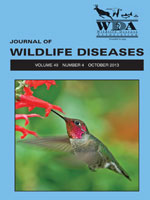White-nose syndrome (WNS) is an emerging infectious disease of hibernating bats linked to the death of an estimated 5.7 million or more bats in the northeastern United States and Canada. White-nose syndrome is caused by the cold-loving fungus Pseudogymnoascus destructans (Pd), which invades the skin of the muzzles, ears, and wings of hibernating bats. Previous work has shown that WNS-affected bats arouse to euthermic or near euthermic temperatures during hibernation significantly more frequently than normal and that these too-frequent arousals are tied to severity of infection and death date. We quantified the behavior of bats during these arousal bouts to understand better the causes and consequences of these arousals. We hypothesized that WNS-affected bats would display increased levels of activity (especially grooming) during their arousal bouts from hibernation compared to WNS-unaffected bats. Behavior of both affected and unaffected hibernating bats in captivity was monitored from December 2010 to March 2011 using temperature-sensitive dataloggers attached to the backs of bats and infrared motion-sensitive cameras. The WNS-affected bats exhibited significantly higher rates of grooming, relative to unaffected bats, at the expense of time that would otherwise be spent inactive. Increased self-grooming may be related to the presence of the fungus. Elevated activity levels in affected bats likely increase energetic stress, whereas the loss of rest (inactive periods when aroused from torpor) may jeopardize the ability of a bat to reestablish homeostasis in a number of physiologic systems.
How to translate text using browser tools
1 October 2013
WHITE-NOSE SYNDROME-AFFECTED LITTLE BROWN MYOTIS (MYOTIS LUCIFUGUS) INCREASE GROOMING AND OTHER ACTIVE BEHAVIORS DURING AROUSALS FROM HIBERNATION
Sarah A. Brownlee-Bouboulis,
DeeAnn M. Reeder
ACCESS THE FULL ARTICLE

Journal of Wildlife Diseases
Vol. 49 • No. 4
October 2013
Vol. 49 • No. 4
October 2013
Arousal from torpor
Bat
behavior
grooming
Little Brown Myotis
Myotis lucifugus
Pseudogymnoascus destructans




